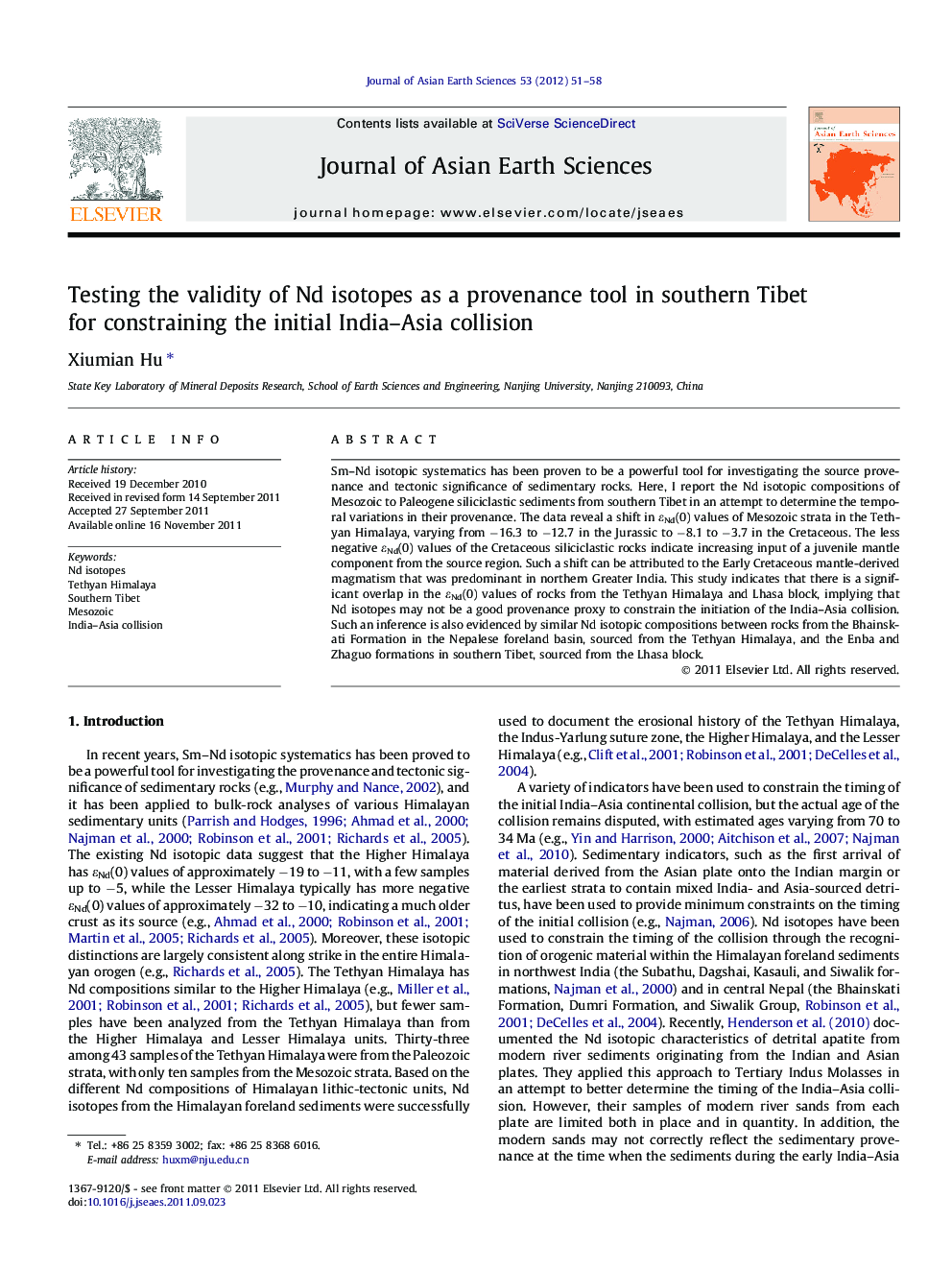| Article ID | Journal | Published Year | Pages | File Type |
|---|---|---|---|---|
| 4731380 | Journal of Asian Earth Sciences | 2012 | 8 Pages |
Abstract
Sm-Nd isotopic systematics has been proven to be a powerful tool for investigating the source provenance and tectonic significance of sedimentary rocks. Here, I report the Nd isotopic compositions of Mesozoic to Paleogene siliciclastic sediments from southern Tibet in an attempt to determine the temporal variations in their provenance. The data reveal a shift in εNd(0) values of Mesozoic strata in the Tethyan Himalaya, varying from â16.3 to â12.7 in the Jurassic to â8.1 to â3.7 in the Cretaceous. The less negative εNd(0) values of the Cretaceous siliciclastic rocks indicate increasing input of a juvenile mantle component from the source region. Such a shift can be attributed to the Early Cretaceous mantle-derived magmatism that was predominant in northern Greater India. This study indicates that there is a significant overlap in the εNd(0) values of rocks from the Tethyan Himalaya and Lhasa block, implying that Nd isotopes may not be a good provenance proxy to constrain the initiation of the India-Asia collision. Such an inference is also evidenced by similar Nd isotopic compositions between rocks from the Bhainskati Formation in the Nepalese foreland basin, sourced from the Tethyan Himalaya, and the Enba and Zhaguo formations in southern Tibet, sourced from the Lhasa block.
Related Topics
Physical Sciences and Engineering
Earth and Planetary Sciences
Geology
Authors
Xiumian Hu,
